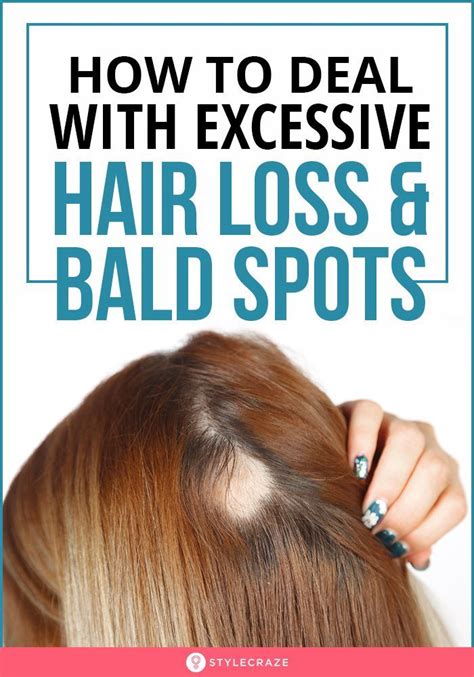Losing hair is a common experience that affects both men and women. While some hair loss is normal, sudden or excessive hair loss can be a sign of an underlying medical condition. Bald head patches, also known as alopecia areata, is one such condition that can cause significant hair loss.

What is Alopecia Areata?
Alopecia areata is an autoimmune disorder that causes the body’s immune system to attack its own hair follicles, leading to hair loss. This results in round or oval patches of baldness on the scalp, eyebrows, or other areas of the body.
Statistics on Alopecia Areata
According to the National Institute of Health (NIH), alopecia areata affects approximately 6.8 million people in the United States, or about 2% of the population. It is more common in women than men, with an estimated 1 in 5 women experiencing some form of alopecia areata in their lifetime.
Causes of Alopecia Areata
The exact cause of alopecia areata is unknown, but it is believed to be related to a combination of genetic and environmental factors. Some potential triggers for alopecia areata include:
- Stress
- Thyroid disease
- Vitamin deficiencies
- Certain medications
- Infections
- Family history of alopecia areata
Symptoms of Alopecia Areata
The primary symptom of alopecia areata is sudden hair loss in round or oval patches. These patches can vary in size, from small coin-sized areas to larger patches that cover the entire scalp. In some cases, hair loss can also occur in the eyebrows, eyelashes, or other areas of the body.
Treatments for Alopecia Areata
There is currently no cure for alopecia areata, but there are a number of treatments that can help to slow down hair loss, promote hair regrowth, and reduce inflammation. These treatments include:
- Topical medications, such as minoxidil or corticosteroids
- Oral medications, such as finasteride or dutasteride
- Immunotherapy, such as phototherapy or JAK inhibitors
- Scalp injections, such as corticosteroids or cyclosporine
Prevention of Alopecia Areata
As the cause of alopecia areata is unknown, there is no sure way to prevent it. However, managing stress and maintaining a healthy lifestyle may help to reduce the risk of developing the condition.
Impact of Alopecia Areata
Alopecia areata can have a significant impact on a person’s self-esteem, confidence, and social interactions. Hair loss can lead to feelings of embarrassment, shame, and isolation. It can also disrupt daily activities, such as work, school, or social events.
Tips for Coping with Alopecia Areata
Coping with alopecia areata can be challenging, but there are a number of resources and strategies that can help. These include:
- Seeking support from others: Joining support groups or connecting with other people who have alopecia areata can provide emotional support and encouragement.
- Using hair coverings: Wigs, hats, or scarves can help to conceal hair loss and boost confidence.
- Practicing self-care: Engaging in activities that promote physical and mental well-being, such as exercise, meditation, or spending time in nature, can help to reduce stress and improve mood.
- Seeking professional help: If alopecia areata is causing significant distress, consider seeking help from a therapist or counselor to develop coping mechanisms and improve self-esteem.
Conclusion
Bald head patches, or alopecia areata, is a common autoimmune disorder that can cause significant hair loss. While there is currently no cure for alopecia areata, there are a number of treatments that can help to slow down hair loss, promote hair regrowth, and reduce inflammation. Coping with alopecia areata can be challenging, but with the right support and strategies, individuals can manage the condition and live fulfilling lives.
Table 1: Statistics on Alopecia Areata
| Statistic | Source |
|---|---|
| Affects 6.8 million people in the US | National Institute of Health (NIH) |
| More common in women than men | American Academy of Dermatology |
| Estimated 1 in 5 women experience alopecia areata in their lifetime | National Alopecia Areata Foundation |
Table 2: Triggers for Alopecia Areata
| Trigger | Description |
|---|---|
| Stress | Physical or emotional stress can trigger alopecia areata |
| Thyroid disease | Thyroid problems can disrupt hair growth and lead to hair loss |
| Vitamin deficiencies | Deficiencies in vitamins, such as vitamin D and iron, can contribute to hair loss |
| Certain medications | Some medications, such as chemotherapy drugs and blood thinners, can cause hair loss as a side effect |
| Infections | Bacterial or viral infections can trigger alopecia areata |
| Family history of alopecia areata | Having a family member with alopecia areata increases the risk of developing the condition |
Table 3: Treatments for Alopecia Areata
| Treatment | Description |
|---|---|
| Topical medications | Minoxidil and corticosteroids can help to promote hair growth and reduce inflammation |
| Oral medications | Finasteride and dutasteride can block the effects of hormones that contribute to hair loss |
| Immunotherapy | Phototherapy and JAK inhibitors can suppress the immune system and prevent it from attacking hair follicles |
| Scalp injections | Corticosteroids or cyclosporine can be injected into the scalp to reduce inflammation and promote hair growth |
Table 4: Tips for Coping with Alopecia Areata
| Tip | Description |
|---|---|
| Seek support from others | Join support groups or connect with other people who have alopecia areata for emotional support |
| Use hair coverings | Wigs, hats, or scarves can help to conceal hair loss and boost confidence |
| Practice self-care | Engage in activities that promote physical and mental well-being, such as exercise, meditation, or spending time in nature |
| Seek professional help | If alopecia areata is causing significant distress, consider seeking help from a therapist or counselor to develop coping mechanisms and improve self-esteem |
